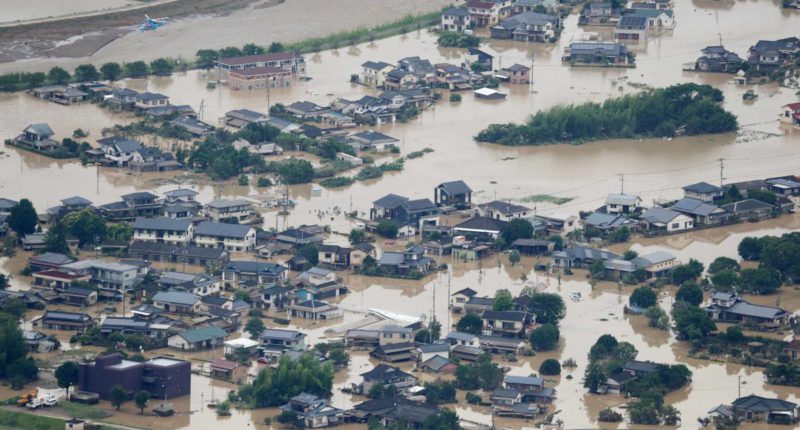Rescue personnel in Japan have issued warnings of mudslides and flooding as one of the strongest storms to hit the country in decades smashes the country.
What’s happening now
Since making landfall on the southern island of Kyushu on Sunday morning, Typhoon Nanmadol has killed at least two people and injured 90 others. Over 9 million people have been ordered to evacuate, and over 350,000 houses have lost power.
Rainfall of up to 400mm (16in) is expected during the next 24 hours, according to forecasts. The super typhoon produced wind gusts of up to 234km/h (145mph), demolishing homes and businesses.
Tokyo saw heavy rain, and the Tozai underground line was closed due to flooding. Bullet train services, ferries, and hundreds of flights have been canceled, as have stores and enterprises. Roofs were ripped off, buildings and billboards were knocked over, according to local camera footage.
Government response
Prime Minister Fumio Kishida has postponed his trip to New York, where he was scheduled to deliver a speech at the UN General Assembly, until Tuesday in order to assess the storm’s impact.
The storm is expected to curve east and pass over Honshu, Japan’s biggest island, before moving out to sea by Wednesday.
Why this is happening
This year’s hurricane season is expected to be busy, because of a natural phenomenon known as La Nina.
Warmer sea surface temperatures in the Atlantic and Caribbean due to climate change may influence the frequency and strength of storms.

